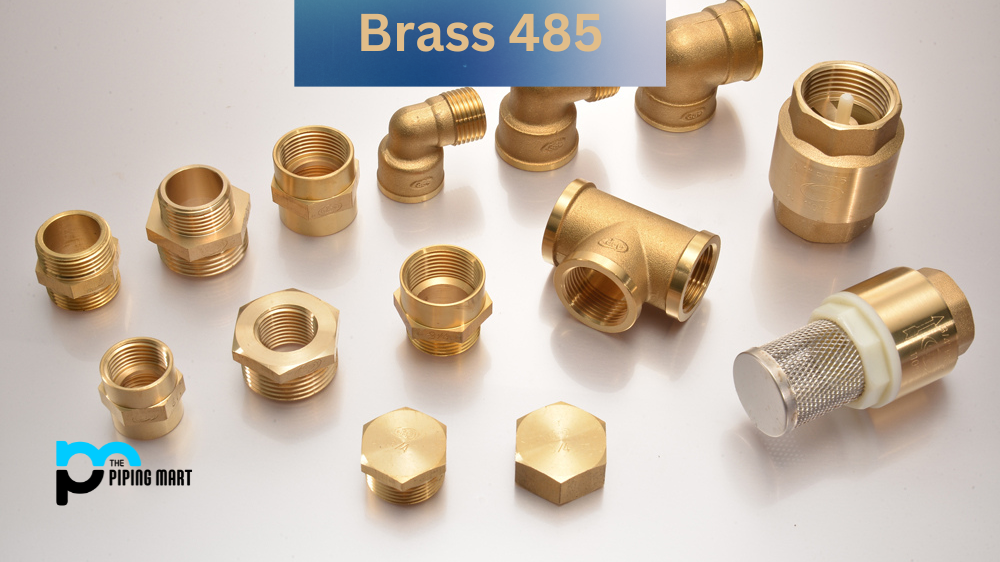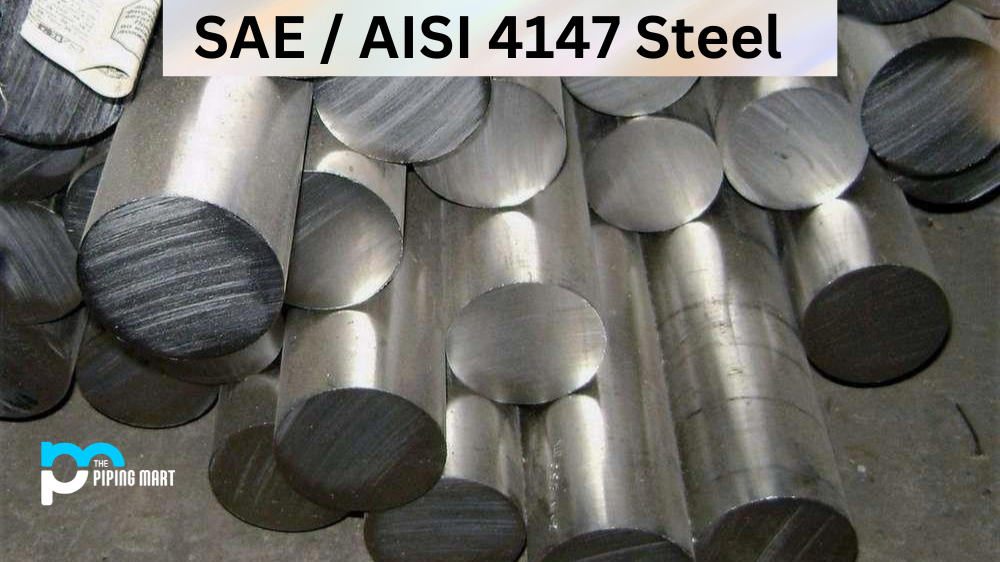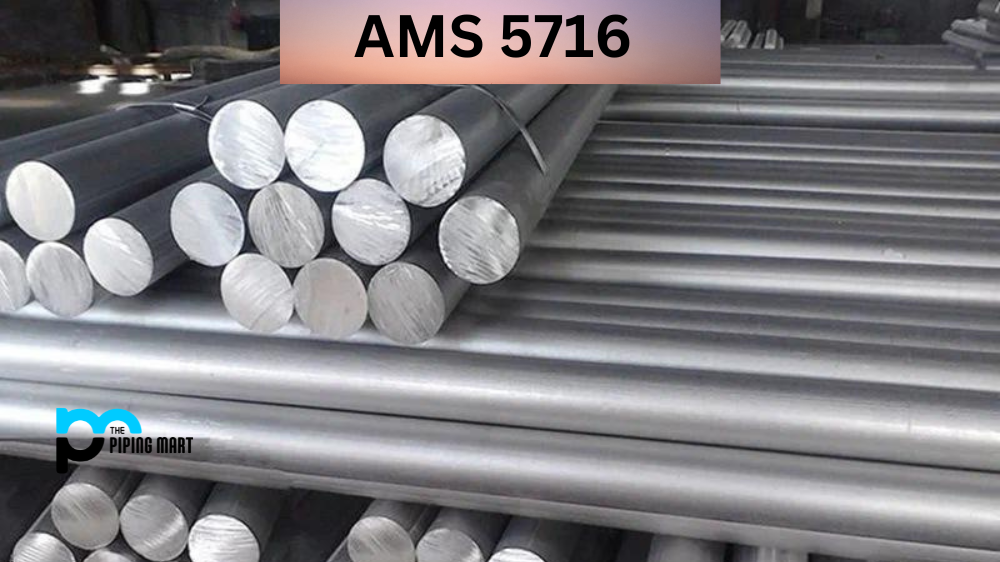Brass 485 is a special alloy that has a unique set of characteristics, making it an ideal choice for a variety of applications. This alloy is composed of different elements and has certain physical, mechanical, and chemical properties that make it the perfect material for many projects. In this blog post, we’ll discuss the composition, properties, uses, corrosion resistance, heat treatment and machining processes associated with Brass 485.
485 Brass Composition
Brass 485 is an alloy created from copper and zinc in a ratio of 67% copper to 33% zinc by mass. It also contains trace amounts of lead which assist in its machinability. The combination of these elements creates a metal that has excellent strength and durability while also having good electrical conductivity. It also has high ductility, which makes it easier to form into components as needed.
Brass 485 exhibits low thermal expansion when compared to other materials such as steel or aluminium. This makes it an ideal choice for applications where thermal expansion needs to be minimized, such as electronic components or automotive assemblies. It also has very good corrosion resistance due to its high zinc content, which helps protect against rust and oxidation from environmental conditions.
|
Element
|
Percentage
|
| Sn | 0.5 – 1 |
| Cu | 59 – 62 |
| Pb | 1.3 – 2.2 |
| Fe | 0 – 0.1 |
| Zn | 34.3 – 39.2 |
| Residual | 0 – 0.4 |
485 Brass Chemical Properties
Brass 485 is an alloy containing a combination of copper, zinc, and lead. It has excellent machinability and workability, making it well-suited for many industrial applications. For example, its good soldering properties make it ideal for the production of hinges and other intricate machinery components. Additionally, Brass 485 is durable enough to be used in cold temperatures without suffering from corrosion or other damage from the elements. Boilermaking and electrical work are also popular uses for this alloy due to its chemical properties; for example, its high electrical conductivity reduces the risk of wiring failure. All in all, Brass 485 is an advantageous material that fits the needs of most industrial production use cases.
485 Brass Mechanical Properties
The mechanical properties of a brass alloy like Brass 485 offer a range of both practical and aesthetic advantages. Aluminium, copper, and zinc are combined to form an intricate alloy that is lightweight yet incredibly strong and corrosion-resistant. Because of its increased ductility and formability, Brass 485 can be easily crafted into almost any shape needed for applications such as manufacturing components or crafting tools. Plus, the beautiful golden hue of Brass 485 can add an eye-catching layer of decoration to various items. When it comes to finding a versatile material with impressive mechanical properties, Brass 485 should certainly not be overlooked.
| Hardness* | Rockwell B Scales | 82 |
| Tensile Strength** | KSI | 75 |
| Yield Strength** (.5% EAU) | KSI | 53 |
| Elongation** | % in 2 inch | 15 |
485 Brass Physical Properties
Brass 485 is a popular alloy of copper and zinc, possessing several desirable qualities that make it an ideal material for many uses. Its bi-modal microstructure gives it high tensile strength and wear resistance, making it a great choice for any engineering application where the product must endure wear and stress. Its good electrical conductivity allows thermal energy to move quickly and easily, while its correlation coefficient ensures efficient heat dissipation at both low and high temperatures from ambient to over 600°C. On top of all that, Brass 485 also has excellent machinability – enabling smooth cutting for precise parts when tight tolerances matter most. It’s no wonder why so many industries rely on Brass 485 for their essential components.
|
Physical Properties 485 Brass
|
|||||
|
-H02
|
|||||
|---|---|---|---|---|---|
| Density | 0.305 lb/in3 | ||||
| Ultimate Tensile Strength | 75 ksi | ||||
| Yield Tensile Strength | 52.9 ksi | ||||
| Shear Strength | 40 ksi | ||||
| Shear Modulus | 5,660 ksi | ||||
| Hardness Rockwell | Brinell | B82 | 154 | ||||
| Elongation at Break Percentage | 15% | ||||
| Modulus of Elasticity | 14,500 ksi | ||||
| Poisson’s Ratio | 0.28 | ||||
| Machinability Percentage | 70% | ||||
| Melting Point | 1,630-1,650 °F | ||||
| Specific Heat | 9.08 x 10^-2 BTU/lb-°F | ||||
| Thermal Conductivity | 805 BTU-in/hr-ft^2-°F | ||||
| Electrical Conductivity | 26% IACS | ||||
485 Brass Thermal Properties
| Properties | Metric | Imperial |
|---|---|---|
| Thermal expansion co-efficient (at 20-300°C/ 68-572°F) | 21.2 µm/m°C | 11.8 µin/in°F |
| Thermal conductivity | 116 W/mK | 805 BTU in/hr.ft².°F |
485 Brass Equivalent
- ASTM B124
- ASTM B21
- ASTM B283
- QQ B639.
485 Brass Uses
Due to its unique properties, Brass 485 can be used in a wide variety of applications, including plumbing fixtures, radiators, condensers, valves and pump housings. The material is often used for medical devices such as implants due to its non-toxic nature as well as its excellent corrosion resistance properties. Other applications include electrical connectors and automotive parts due to their excellent electrical conductivity and low thermal expansion rate, respectively.
Corrosion Resistance
Brass 485 offers excellent corrosion resistance thanks to its high zinc content, which helps protect against rusting or oxidation from environmental conditions such as humidity or saltwater exposure. The material can also withstand temperatures up to 1000°F (538°C). In order to maximize the material’s corrosion resistance capabilities.
Heat Treatment
Heat treatment may be needed depending on the application requirements at hand. This would involve either annealing or hardening processes in order to increase the hardness and durability of brass when exposed to harsh environments or heavy loads/stresses over time.
Machining
Machining brass can be quite tricky, but with the right tools, it can be done with ease if done correctly using proper techniques such as turning, milling or drilling processes along with proper cutting fluids for lubrication purposes if necessary for the job at hand.
Welding
As far as welding goes, brass will require to preheat because too much heat could cause warping or distortion during the welding process, so any attempts should only be made under professional supervision if possible due to safety reasons as well as quality assurance standards being met per industry standards set forth by governing bodies such as ASTM etc.
Conclusion
Brass 485 is an alloy composed primarily of copper and zinc with trace amounts of lead added in order to improve machinability characteristics whenever required by application demands/needs. This alloy offers many advantages, including excellent strength & durability along with great electrical conductivity & low thermal expansion rate, which make it suitable for many projects ranging from plumbing fixtures & radiators all way up to medical device implants & electronics components alike. Furthermore, this material offers good corrosion resistance capabilities thanks to its high zinc content while still being able to maintain structural integrity even after undergoing heat treatment processes such as heat treating, either hardening or annealing, depending on project requirements. Finally, brass is easily workable through various machining techniques utilizing correct cutting fluids when necessary, along with proper welding techniques when applicable under supervision. For more detailed information, please contact your local supplier who specializes in metals like brass.
Sakshee is a talented blogger, with a particular focus on the Business and Metal Industry. She is passionate about sharing her insights on various metal products and helping professionals to make a better decisions.




